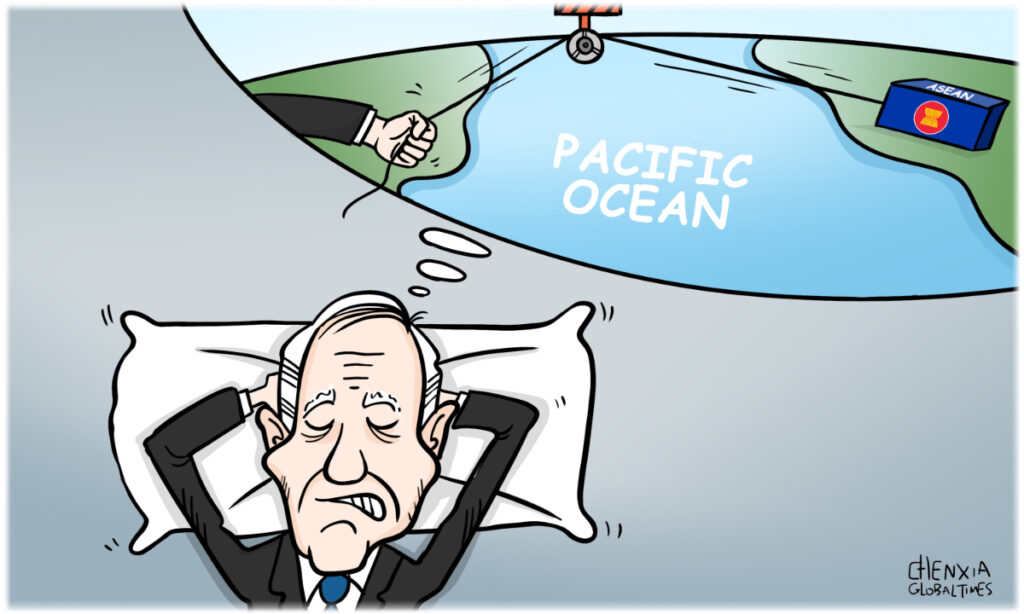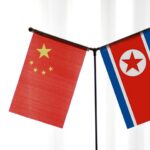Despite US President Joe Biden’s well-calculated absence from the 43rd ASEAN Summit and related meetings held in Jakarta, Indonesia, some US media outlets wasted no chance to push for US agendas in the region.
On Thursday, VOA Chinese published an article entitled “China showing off its map before ASEAN Summit forces ASEAN and India to get closer.” The article cited so-called observers and claimed that China’s deliberate issue of a controversial new edition of the national map would enhance security and economic ties between India and ASEAN.
Some Chinese analysts reached by the Global Times believe that the US media intentionally stirred up tensions by exploiting the ASEAN Summit and China’s launch of the new map. On August 28, China’s Ministry of Natural Resources released the 2023 edition of the standard national map. China’s claims haven’t changed, and its stance on the South China Sea issue with certain ASEAN member states has been consistent, which is “putting aside disputes and seeking joint development.” It makes no sense to claim that China’s new map is a timed move to provoke ASEAN or other South China Sea claimants.
Nonetheless, the US media took it as a chance to link the issue with the ASEAN Summit, in a bid to stir up the currently peaceful South China Sea situation and incite regional countries to provoke and take a tough stance against China. This was done with the intention of pulling ASEAN into the orbit of the US Indo-Pacific Strategy to contain China.
Ma Bo, an associate professor at the School of International Studies and the assistant director of the Collaborative Innovation Center of South China Sea Studies at Nanjing University, told the Global Times that this is not the first time that the US has taken advantage of regional summits to bring up the South China Sea issue and exploit the disputes between China and its neighboring countries to worsen China’s development environment.
Prior to the ASEAN Foreign Ministers’ Meeting in July, the US began to smear China’s law-enforcement activities, which were aimed at safeguarding China’s territorial sovereignty and maritime order, after Philippine coast guard vessels intruded into the waters off the Ren’ai Reef without Chinese permission on June 30. During the ASEAN Foreign Ministers’ Meeting, US Secretary of State Antony Blinken vowed unity with Southeast Asian nations against “coercion,” in a thinly veiled reference to China. Nonetheless, ASEAN nations maintained a lukewarm attitude.
What ASEAN countries are dissatisfied with the most is the constant absence of US presidents at ASEAN summits, be it Biden or former presidents Donald Trump and Barack Obama. This time, Biden has skipped Indonesia but will visit Vietnam. “This will make ASEAN believe that the US is actually dividing ASEAN and viewing the Philippines and Vietnam as its agents to contain China,” said Ma.
While the US hopes to woo any country possible to achieve this goal, India could be an easy pick. The US often touts its relations with India, and India is a member of the US-led Quad. But will India have the US’ wish fulfilled?
Long Xingchun, a professor at the School of International Relations at Sichuan International Studies University and president of the Chengdu Institute of World Affairs, told the Global Times that compared to China, ASEAN’s economic cooperation with India is very limited in scale, so is India’s influence on ASEAN. India has even withdrawn from the Regional Comprehensive Economic Partnership, which ASEAN has high hopes for. Long added that ASEAN has taken a negative and even opposing attitude toward Quad, as it believes Quad will not only divide Asia and create confrontation, but also weaken the ASEAN centrality during the process of East Asian integration.
The US media reports are filled with vicious calculations aimed at making countries in the Indo-Pacific region cannon fodder of the US’ Indo-Pacific Strategy. The US has long been trying to involve these countries in its agenda, and it continues to do so by exploiting various opportunities. This shows that the US’ previous efforts were not successful. The fundamental reason is that the US only considers its own interests without taking into account the interests of regional countries and their pursuit of strategic autonomy. There is a huge misalignment or even contradiction between US’ goals and the interests of these countries.
(Global Times)




